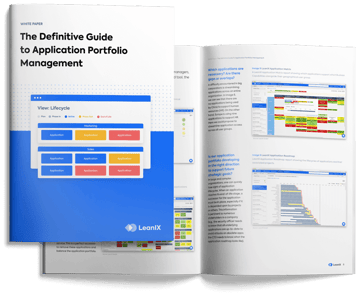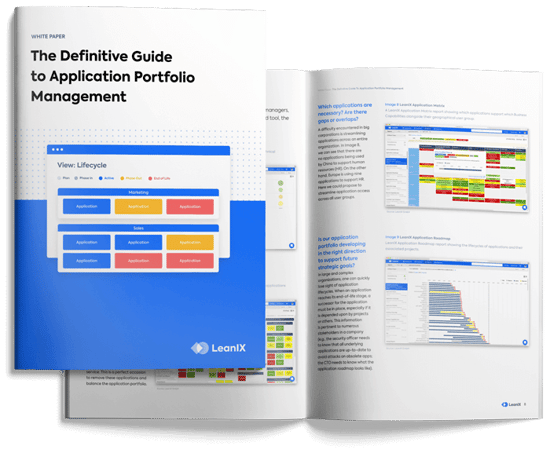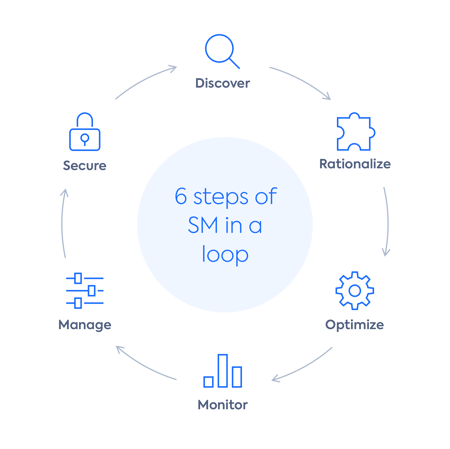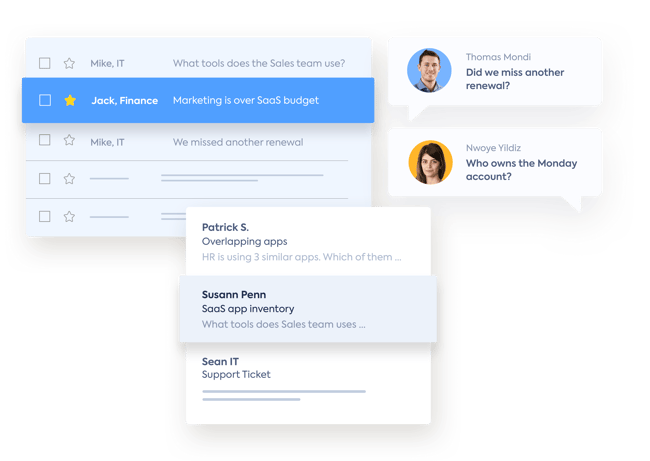The key benefits of SaaS management
Even though application portfolio management offers broader strategic benefits, there are still specific gains to SaaS management for companies heavily relying on cloud-based services:
Visibility into your SaaS estate
SaaS management gives a complete picture of all SaaS subscriptions, user licenses, owners, contracts, renewals, and costs. It also captures vital usage trend data enabling informed decision-making about renewals and future investments.
The beauty of SaaS is when 30% of subscriptions are unused, it gives companies an option to not renew or renegotiate SaaS agreements in the next contract period.
Complete visibility was the initial use case explored by SaaS management platforms, and it remains the main one.
SaaS spend optimization―Increase SaaS ROI
SaaS managers can use the usage data to determine whether organizations are receiving value from SaaS investments. Following SaaS spend optimization process together with actionable insights allows them to remove excess vendors, licenses, and redundant SaaS solutions that are not needed.
SaaS management insights are used to drive discounts, e.g. by consolidating multiple Salesforce instances and contracts, or to yield savings during a competitive bid process for exclusivity when using Webex, Zoom, GoToMeeting, and Skype for video conferencing.
📚 Related: Application Rationalization
Security gaps removal and compliance certainty
First, SaaS management enables control over SaaS security threats with shadow IT discovery. Integrations allow tracking of any SaaS purchases happening across the departments一even the ones bought through corporate credit cards.
Secondly, access to an organization’s sensitive data is secured by automatically identifying and de-provisioning licenses with employees that already left the company.
Having full SaaS visibility enables leaders to identify SaaS vendors that comply with the organization’s policies and ensure compliance with regulatory requirements, such as, GDPR, SOC2, and others.
📚 Related: Technology Risk Management
Operational efficiency
Continuous SaaS stack growth means companies have multiple renewals per week to process. SaaS management saves time by having all the renewal information in one spot一ownership information, usage data, contract value, and renewal dates (renewals calendar).
Finance, procurement, and IT analysts are able to switch from active to proactive approaches. They are notified with automatic alerts of when renewals are due and answer questions, such as:
- What software does a salesperson need to start working?
- How much does software for each marketing person costs? How much is the departmental cost?
- How much will our software cost drop when an employee leaves?
Employee onboarding and offboarding take time, especially when the complete SaaS portfolio is unknown. SaaS management insights speeds up recognition of which applications a person leaving was signed up for and automates the IT request process to ensure employees receive the software they need to do their job quickly and with minimum impact on IT resources.
Employee satisfaction
SaaS management software enables users to recognize the value of SaaS investments and ensures the employees are getting the most out of them.
It provides insight into whether users are fully adopting new solutions and can uncover areas where training or an internal comms campaign can help. This is done through fine-grained tracking of which features are being used by each user.
How to get started with SaaS management
You know your business and which areas are noticeably undisciplined—likely losing money or failing to generate a return from their investments.
The market of SaaS management tools out there is growing and each one has its differentiators, therefore it’s necessary to know how to get started:
Build a buy-in
Defining your SaaS management business case is the key to success. When you know what you want to achieve, and why, you can get the necessary buy-in. LeanIX suggests aligning views internally with:
- Assign ownership teams with cross-functional perspectives and relationships
- Define a clear vision for SaaS management, including priority outcomes
- Agree to a holistic approach to SM. This includes managing SaaS through approval, acquisition, usage, and renewal or retirement
- Build relationships and plan collaboration with functional SM stakeholders
- Determine experience owners (e.g., FP&A or IT) and dedicate the human capital needed for management
- Evaluate SM platforms and select a vendor with industry expertise and a dedicated support team
Collect requirements and set goals
Stakeholders need shared objectives—this starts with expectation setting at the executive level that cascades throughout the business.
Defining these objects is a set of collaborative experiences. Interested stakeholders (ideally, with varying levels of seniority) can work together to broadly discuss opportunities for the business to improve. Then, project leads can work tactically to deliver these.
C-level leaders should discuss main challenges including issues of risk, compliance, value-creation, employee engagement, and/or cost-reduction. These may be prioritized, quantified, and assigned clear targets. A task force of IT, finance, HR, and security leaders may then be assigned to evaluate SM platforms and map out an implementation plan.
Navigate vendors and platform differences
SaaS management marketplace features a crop of innovative platforms working inside both startups and Fortune 100 companies. Platform capabilities do vary, however, LeanIX finds that platforms’ support of the benefits discussed earlier often differs.
Ask the questions to help assess the right fit
Understanding platform capabilities is essential to finding a right-fit solution. Often, platforms seem the same; however, vendors emphasize a variety of features or functions and prioritize certain business drivers, like visibility, differently.
Below, we organize sample sets of vendor discussion topics. Verify these in the context of your business goals during an SM platform evaluation:
- Unlocking visibility and discovery
- Realizing value delivery
- Improving risk management
- Supporting operational efficiency
Deployment timeline
While the deployment times vary based on the project complexity, enterprises generally have a platform running four to six weeks after contract signing.
To ensure swift onboarding secure a company-wide alignment around the problems that SM intends to solve, allocate internal resources for this initiative, compile input information about SaaS estate, and share documentation around any past attempts to solve SaaS management.
Conclusion
No matter how mature your SaaS management processes are–from reasonably defined to non-existent–it’s not too late to expand control.
Smart businesses are moving en masse to SaaS management to restore both the value promise of cloud applications and mitigate debilitating security and compliance issues. The importance and sense of urgency to become a more agile digital business are clear.
¹ https://www.provokemedia.com/latest/article/the-launch-of-salesforce-com-and-the-end-of-software
² https://www.gartner.com/en/documents/3994453/predicts-2021-building-on-cloud-computing-as-the-new-nor
³ Statistics are taken from 2019 The State of SaaS Business Spend report conducted by Cleanshelf (now a part of LeanIX).







